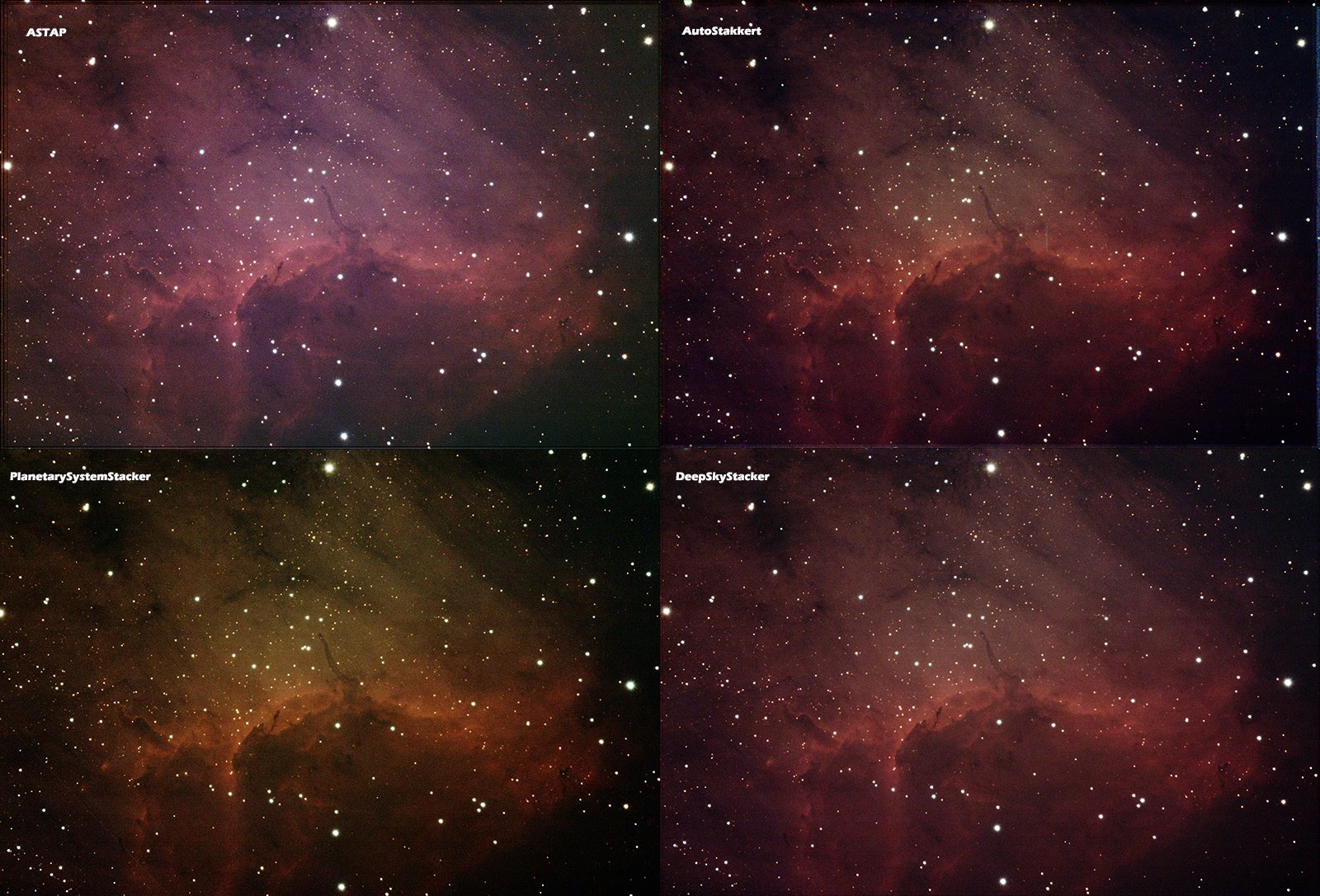

Anyway, here is the first part of the rather long story that will probably be completed in a year from now… I planned to post this story soon after the images were taken, but for some reason that never happened…. Today I will discuss an image of M42 that I made over a year ago on the night of November 18-19 2012. When I do that, I will try to tell just a little bit about how the image was made, and what it actually is that you are looking at. Occasionally, I’m going to use this blog to show some of the images I made. Also clearly visible is the north polar cap consisting mostly of water ice during summer. The little dark dot on the center left for example is a large shield volcano Ascraeus Mons peaking through some water ice clouds.

Because the recordings I made were quite lengthy, and especially far apart in time, I used WinJUPOS to compensate for the planet rotation by derotating the stacked images. Using this technique, it is even possible to combine multiple recordings together to increase the signal to noise ratio (produce prettier images), or even get rid of some sharpening or diffraction related artifacts in high-contrast areas.Īnyway, lots of cool stuff can be seen in this image of Mars. Mars rotates once in about 25 hours, but if you record using a monochrome camera every color after each other, there is a small color displacement between the channels when you turn the images into a color image. This is actually an often used ‘trick’ by planetary astrophotographers: not only do we perform lucky imaging within a recording, by letting AS!2 select and combine only the sharpest portions of frames, but also between recordings, where we basically select (or show!) only the best recordings out of hours of material. The best recordings were then processed more carefully using AS!2. To this end, I first let AS!2 quickly batch-process all recordings using just a single alignment point and then manually previewed and selected the resulting stacks. Processing the data took quite some time: out of 50 recordings I wanted to select only the most promising ones to then further process using AutoStakkert!2. I still have some recordings left to process from the night before, and I’m really curious to see the changes in the results from one day to the next as the clouds on Mars can be pretty dynamic!įor this recording I used the ASI120MM monochrome camera (as usual) and some Baader color filters. Here is my latest result: Mars imaged on May 17 under pretty good conditions (well, for Dutch conditions of course). The other recordings just weren’t anywhere as useful.Īnyway by far my best Jupiter this season, and I’m quite pleased with the result. I had recorded for several hours at a time, but in the end I combined only the best 4 red channels, and 2 green and blue channels each, that all happened to be imaged within about a 25 minute time period of more stable conditions. But it does take forever though. The seeing wasn’t that great really, I only stacked about 30-40% of the frames for each recording, but the transparency was good and being able to use this many stacks really helps to bring out the finer details and contrasts. I like this semi-manual approach, as it gives you lots of control, and involves lots of fiddling around with image processing software. For this image I let WinJUPOS derotate each slightly sharpened stack I had selected to the same reference, and then I manually recombined all of those again in Photoshop, taking only the best (parts of) each stack. Processing this image all in all took about 5 hours, as I wanted to combine as many images as I could using WinJUPOS.
#Deep sky stacking software manual#
After half an hour into imaging I had to rush back inside and fix some manual declination controls I added just hours before the recording session started – basically I had to apply a bit of lock bond to make sure the bolt stayed fixed when I turned the declination control – but other than that I had everything I wanted: decent tracking capabilities and a possibility to correct for my poor polar alignment. I had been without an equatorial platform for my Dobson for a few weeks, but I was just in time to have a new platform more or less in working condition.


 0 kommentar(er)
0 kommentar(er)
